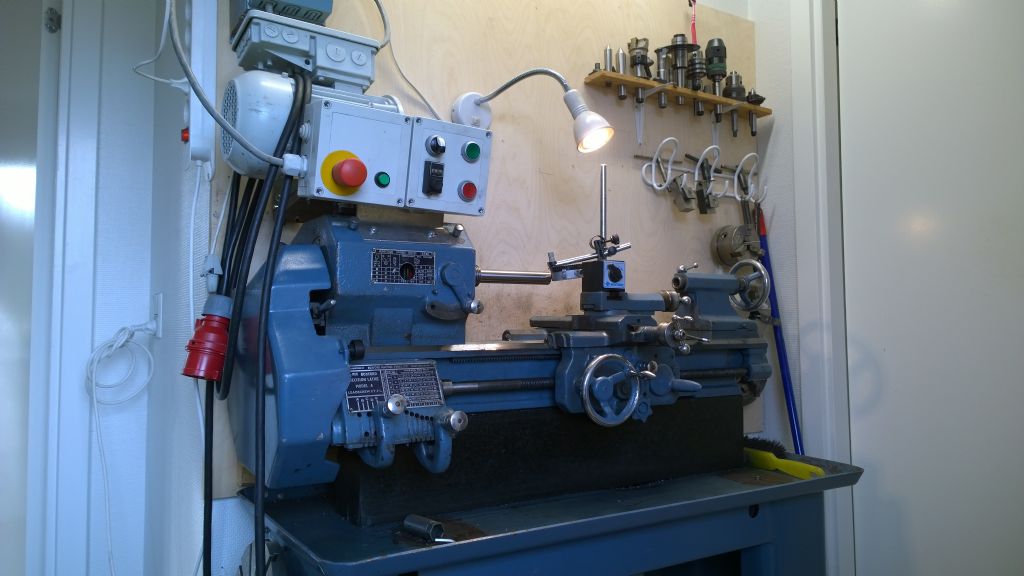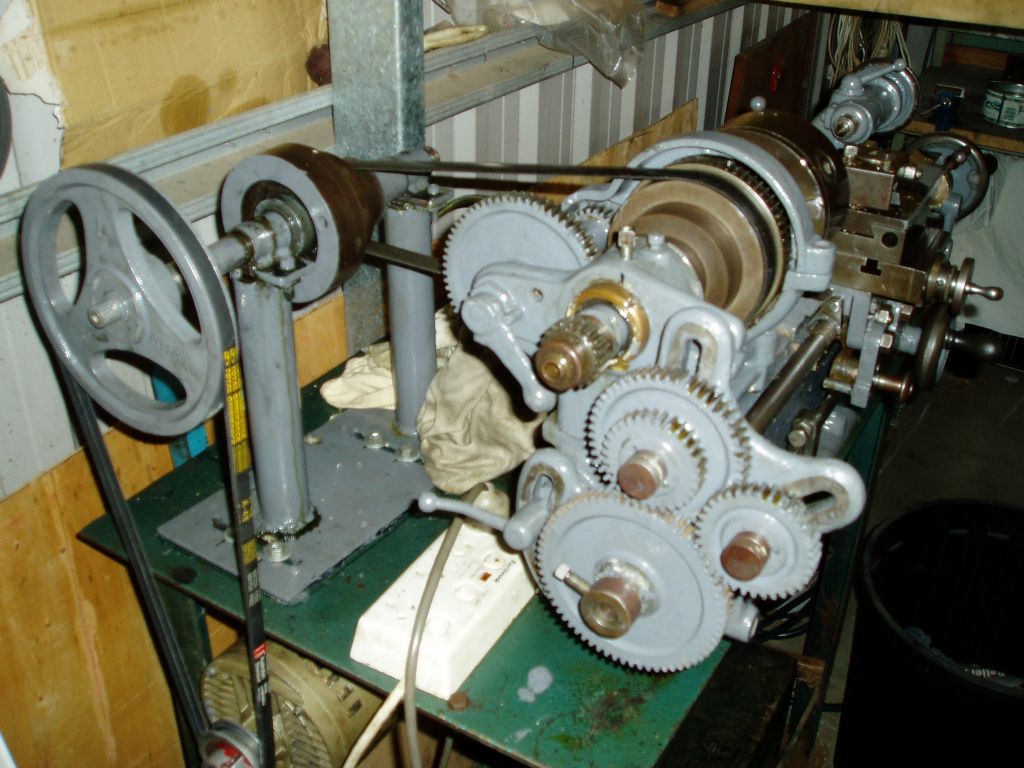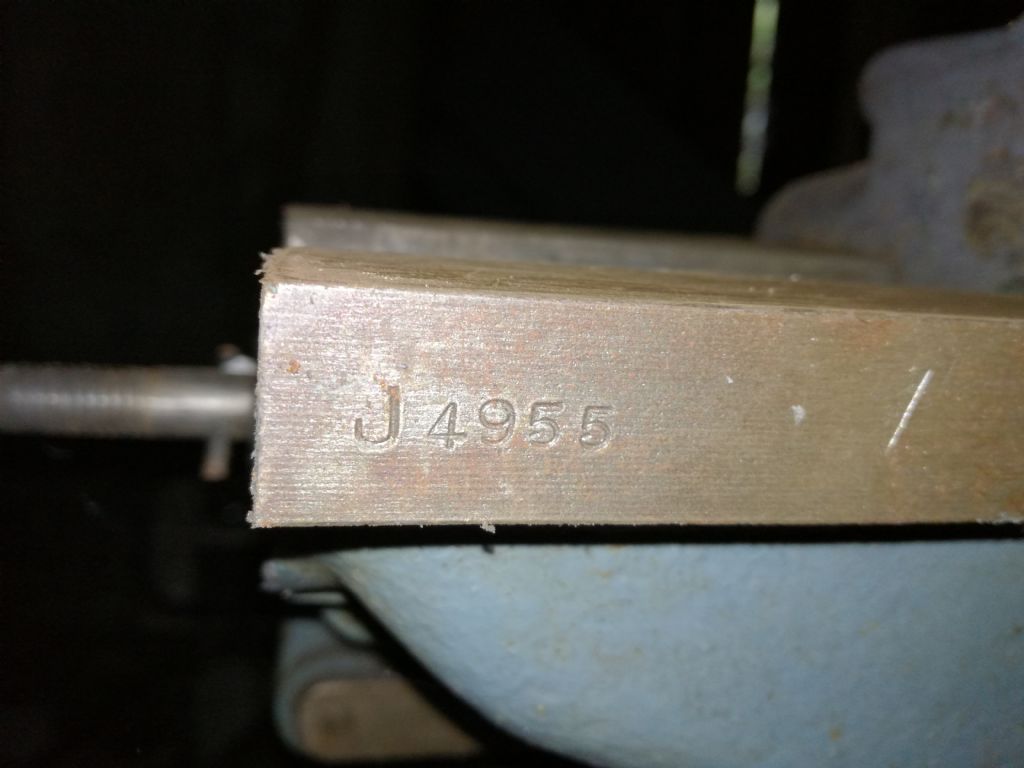Grant
If you are planning to put your M type on a conventional flat top bench with its back against the wall rather than using legs of some description, whether standard castings or something functionally equivalent, the running the drive underneath is hardly worth the effort.
Especially if you use poly-Vee belts and pulleys.
The secret to a compact, above the bench, drive is to use a two stage primary drive so you don't need to accommodate unreasonably large pulleys. Use an L shape layout tucking the motor mostly underneath the back gear outrigger assembly with the first stage of the primary drive running away from the lathe towards the back of the bench. Second stage runs upwards to the countershaft proper at the same height as the lathe centreline so the final drive runs straight forward from countershaft to mandrel.
I have used variations of this layout on a couple of South-Bend 9" lathes to fit them onto an 18" wide bench. Admittedly with some cross slide overhang but the saddle hand wheels were within the width of the bench. Just! Back then I had to use A section Vee belts for the primary drives so smallest practical final drive pulleys could use were, from memory, about 8" diameter. Very small Vee pulleys are a waste of time due to power transmission issues. My small ones were probably around 3" or 3 1/2" diameter. About as small as makes sense for a good drive in A section. Countershaft speed probably around 250-300 rpm on the first effort. Later modified with a two speed and tight – slack belt clutch assembly. Some creativity was need to squeeze it all in but worth the effort.
If you use poly-Vee belts you can probably get down to 4" or so diameter pulleys so it all becomes smaller. Poly-Vee works better than flat belt on the final drive too.
I initially just hinged the motor off the bench for first stage belt tensioning with the second stage bearing assembly floating freely and a normal pivot arm mount for tensioning the final drive. For the second version I fixed the motor and arranged the second shaft to move under lever and spring control to act as a clutch. Robbed the nice cast alloy tube and shaft bearing assembly from a defunct spin drier to make the second shaft unit. My primary drive was pretty much in line with the chuck so a swarf shield was essential. Putting it the other way round got in the way of the drop gear banjo. Second stage was on the usual side.
Of course there is no reason why you couldn't do something similar with the motor under the bench with the second stage drive poking up through. Its little bit easier as there is more room but it doesn't really win much space as accommodating the final drive run and the drive pulley on the countershaft really defines the amount of room needed. Realistically 4" or 5" is the smallest drive pulley you can use so there will be space for the motor up on top.
Realistically a bench 18" wide from the wall is about as narrow as can accommodate this class of machine.
Clive
 Nicholas Farr.
Nicholas Farr.






